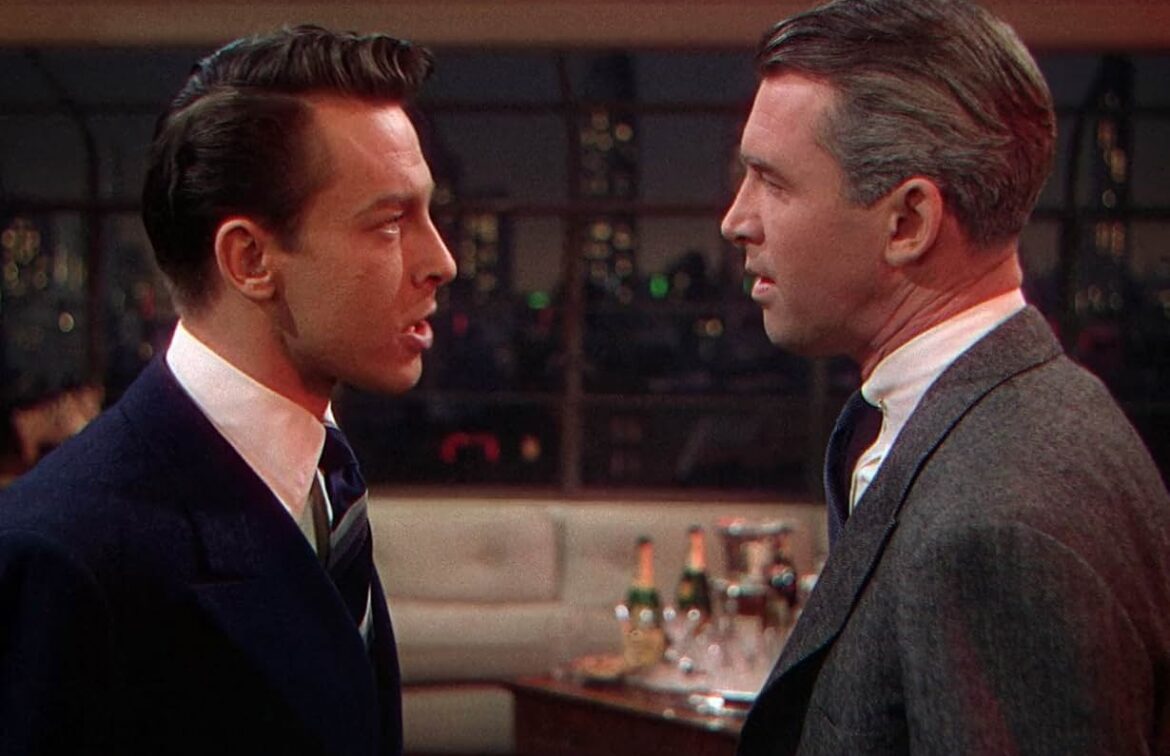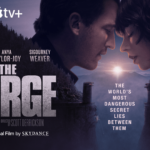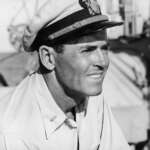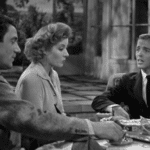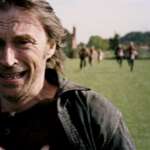Alfred Hitchcock is remembered as a master filmmaker, but many overlook how much of his genius lay in adapting already powerful works. Strangers on a Train (based on Patricia Highsmith’s novel), Rebecca (from Daphne du Maurier’s book), and Psycho (inspired by Robert Bloch’s novel) all showcase this. Rope (1948), however, stands apart—it’s adapted from Patrick Hamilton’s play, itself based on a truly disturbing real-life crime.
The film opens with the murder of David, a character we never truly meet, yet whose absence haunts the entire story. His killers, played by John Dall and Farley Granger, see murder as both a test of their twisted philosophy and, for Dall’s Brandon Shaw, a Nietzschean exercise in proving superiority. Granger’s Phillip Morgan quickly grows anxious, but the plan continues—with an added layer of cruelty: they host a party, inviting David’s parents, friends, and even their former teacher, Rupert Cadell (James Stewart), who first introduced them to Nietzsche’s ideas, in the very room where David’s body lies.
Unlike a classic whodunit, there’s no Poirot here—Shaw’s arrogance and Morgan’s unraveling make the crime increasingly obvious. Tension builds through layers of morbid wordplay, culminating in a chilling philosophical debate between Shaw and Cadell on the morality of murder. As Shaw’s glee is laid bare, Cadell’s unease grows, pushing the film toward its inevitable conclusion.
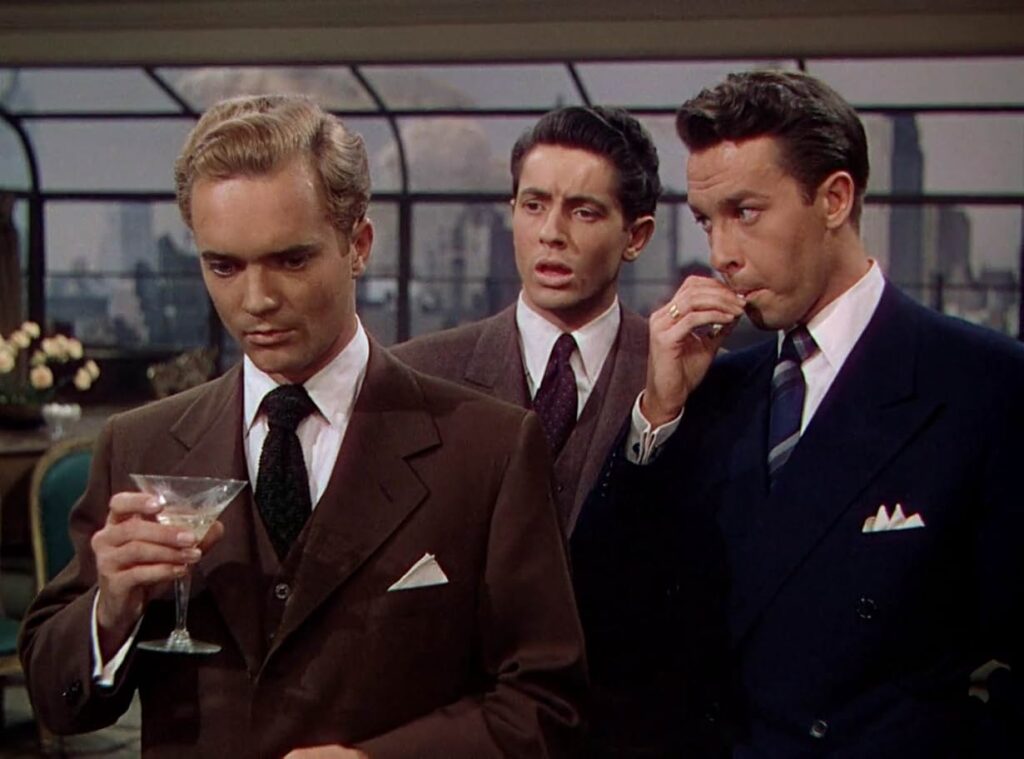
Douglas Dick, Farley Granger, and John Dall in Alfred Hitchock’s Rope (1948)
Rope is a famous example of a “one-shot” film—though cleverly disguised with hidden cuts—its long takes build unbearable tension. You feel the nervous energy of the killers as they prepare for the party, and once guests arrive, their anxiety becomes palpable. The audience, like the killers, knows the body is there, creating a sense of dread with every passing moment. The philosophical discussions only heighten the discomfort, especially as they unfold in front of David’s loved ones. Stewart’s entrance is particularly striking; from the moment he arrives, you sense the killers’ undoing.
Given that Rope is inspired by a famous case, the ending isn’t a mystery—but its moral weight took me by surprise. I don’t often associate Hitchcock with moralizing, so I expected a psychological cat-and-mouse game rather than a pointed critique of dangerous rhetoric. Instead, the film delivers an unexpected lesson: ideas have power, and when misused, they can lead to devastating consequences.
In today’s climate—where politicians and pundits speak with alarming cynicism about humanity—it’s hard not to see Rope as a cautionary tale. While the killers were already disturbed, the film suggests that ideology played a role in pushing them further. The suddenness of this message is the film’s only real weak spot, but Hitchcock was working from a play, and real life is rarely neat. Messy as it is, Rope leaves an impact that lingers long after the credits roll.
